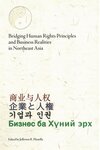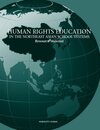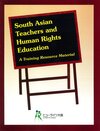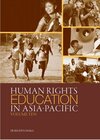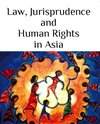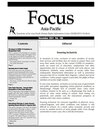As an introduction to my essay, I would like to emphasize that Kazakhstan may have all the symptoms of the “shadow pandemic”1 of hate or distrust for women (misogyny) similar to other Central Asian and other post-Soviet “-Stans” (Kyrgyzstan, Tajikistan, Turkmenistan and Uzbekistan). However, it would be remiss to treat its case as a blueprint for every Central Asian country. As someone who was born and raised in Kazakhstan, I understand my privilege of being from, what is often described, one of the most stable and prosperous authoritarian countries in the subregion. I would also like to highlight that, as tempting as it may seem, judging a whole subregion based on one country would always be fallacious. Thus, I offer my essay to anyone who wishes to learn more about what is happening to women in Kazakhstan. I also would like anyone who reads it and is not from Central Asia to keep in mind that contexts shift and to treat it as one of many narratives of Central Asian women who deserve to be heard and understood.
Violence against Kazakhstani Women
Violence against women (VAW) is globally recognized as a violation of fundamental human rights. Progress towards dismantling patriarchy and achieving gender equality is not a step-by-step fight where first comes eradication of violence followed by some “minor” problems such as equal pay and representation. Gender equality can only be achieved by fighting for all women’s rights at the same time. However, gender-based violence continues to be a particularly cruel and pervasive issue that plagues every society today.
Some even say that it seems to be getting worse and hopeless given the number of stories that are being shared through social media today about women falling victims to domestic abuse, rape, and murder. However, as I would argue, what we are seeing in Kazakhstan today is not necessarily an indicator of hopelessness. On the opposite, it could be that for the first time in decades, there is more hope than there ever was before.
In my research on the ways through which the nationalist rhetoric in Kazakhstan normalizes gender-based violence with “re-traditionalization,”2 a discourse analysis of the social media content on Instagram and Facebook demonstrated a dangerous pervasiveness of victim-blaming and equating misogynistic practices with core Kazakh cultural values. Kazakhstan, similar to many other countries in the world right now, has not been immune from the rise of right-wing nationalism that utilizes women’s bodies as markers of cultural and ethnic borders. Kazakhstani women who share their stories of abuse and trauma are continuously gaslighted and their innocence is questioned in the public discourse, while proper legal punishment is rarely meted out.
One of the most controversial recent cases is the 2018 Talgo case about the rape of a woman by two train conductors in her own train compartment during a night trip.3 The details of what happened that night and the woman’s behavior including drinking habits, age, and intellectual abilities have become a topic of avid discussion. The victim has been blamed for such irrelevant things as not closing the door of her compartment and talking to the conductors hours prior to the attack. This case serves as a good example of how gender-based violence is perpetuated among people by discussing this violence in connection with everyday conversations on the roles of women in society. The Kazakhstani government view on this issue seems to myopically focus on women as mothers, wives, and daughters rather than fully equal members of the society, which is what the Constitution of the country provides at least on paper. For instance, the high divorce rate continues to be discussed as a gender equality issue that needs to be overcome with multimillion budgets and resources propagating “traditional ethnocultural values,” which imply heteronormative4 gender roles of a man being the breadwinner and the leader of the family and a woman being a malleable figure whose main purpose is to raise children. There is no critical discussion of the reasons why so many women choose to leave their marriage and the relation of the divorce rate to a high rate of domestic abuse in the country.
According to UN Women, about four hundred women in Kazakhstan are killed annually as a result of domestic abuse.5 In 2017, Nursultan Nazarbayev, then President of the country and holder of the title “Leader of the Nation,” decriminalized domestic violence and made it a mere administrative offense, which effectively contributed to the casualization of domestic abuse.6
Policy against VAW
2019 was a tumultuous year for Kazakhstan with the transition of power from Nazarbayev to Qasym-Zhomart Toqayev and a growing unrest among the public spilling into peaceful protests and a surge of political and civil activism.7
VAW seems to have become one of the front issues in the turning point of independent Kazakhstan’s history. For the first time in years, President Toqayev addressed rape as an important problem and called for more stringent and thorough punishment for it. However, the progress so far seems to be artificial in nature. Not long after his condemnation of rape of women (which also instilled heteronormativity8 on the issue), President Toqayev signed a new law with a provision that changed the previous penalty of fine to a simple warning for first-time domestic violence abusers. With such continuous decriminalization of gender-based violence, the Kazakhstani government appears to be going backward by reforming existing laws to offer even less protection for women.
However, I believe that the most important thing to understand here is that the actual situation of women in Kazakhstan lies beneath the laws and policies. These laws and policies can only account for so much that is happening in a country with rampant corruption and constant crackdowns on civil liberties. On paper, Kazakhstan has ratified the Convention on the Elimination of All Forms of Discrimination Against Women (CEDAW) and has continuously pledged allegiance to the goal of achieving gender equality in the country.9 This has helped Nursultan Nazarbayev and his authoritarian regime to window dress the country as an appropriate ally and partner of liberal democracies of the West.
While the legal protection of victims of gender-based violence grows weaker, a more important issue is the underreporting and misunderstanding of such violence. It has become normal in the daily life of Kazakhstani people to hear misogynistic jokes and “vines”10 that depict survivors of gender-based violence as hysterical, conniving or both.
Movement for Change
A crucial element that lies beneath the surface is a rapidly growing feminist movement in the country. It is important to note here that while social media has been disseminating in recent years ideas and information on gender equality from various sources, Kazakhstani feminist activists have been working for decades away from the limelight. They have been helping other women and advocating for gender equality by establishing non-profit advocacy organizations, opening makeshift shelters and crisis centers, etc. Recently, social media has been providing an unprecedented level of exposure to feminist organizations and activists in Kazakhstan that keeps the public conversation about violence against women going. From art projects to petitions and marches, women in Kazakhstan are taking more virtual and physical public spaces than ever before. This novel exposure of the extent of suffering from VAW in Kazakhstan may be disheartening to many and give a feeling of hopelessness. However, in the past year, I have personally noticed more and more people actively engaging with questions of feminism, gender equality, and violence against women in different forms and degrees of involvement. Education about these issues takes place in real-life meet-ups, press conferences, social media posts, online lectures and panels, and articles in online magazines. It is still sad to see that the burden of raising awareness about violence against women lays on the shoulders of women themselves. But the women in Kazakhstan have been turning this burden into a momentum of change.
The first International Women’s Day feminist march was held in Almaty on 8 March 2020 with more than two hundred participants.11 Before that, on 28 September 2019, a peaceful feminist protest against gender-based violence was organized in the same city for the first time in the history of independent Kazakhstan.12
Kazakhstani women marching against VAW and sexism on 8 March 2020 in Almaty Kazakhstan. (Photo: Yuna Korostelyova, Vlast.kz)
Peaceful protesters during the first sanctioned feminist demonstration in the history of the country on 28 September 2019 in Almaty, Kazakhstan. (Photo: Informburo.kz)
Reflections
Women have carried a significant weight of organizing and pushing pro-democratic change in the country for the past year, which fits the ubiquitous historical pattern of women being the faces and engines of change. From Asya Tulesova, a political and environmental activist who is unjustly prosecuted by the Kazakhstani government, to Assem Zhapisheva, Dinara Smailova, Zhanar Sekerbayeva, and many others, women in Kazakhstan are by no means passive subjects of the regime and the patriarchy.
Thus, while it seems that so many more people become victims of gender-based violence and the government is not in a hurry to protect them and challenge its patriarchal structure, Kazakhstani feminist activists continue the work of educating, raising awareness, and fighting for each other, and, therefore, attracting more and more attention to the issue of VAW. There is still a long way to go for Kazakhstan, Central Asia, and the rest of the world in eliminating gender-based violence, but the work of the grassroots feminist movement in the country cannot remain unacknowledged.
Aizada Arystanbek has a Masters in Gender and Women Studies from Central European University and is a young intersectionalist feminist academic and activist from Astana, Kazakhstan who believes in decolonization of academia and overthrowing patriarchy.
For further information, please contact: aarystanbek@gmail.com; www.linkedin.com/in/aizada-arystanbek/.
Endnotes
1 “The Shadow Pandemic: Violence against women during COVID-19,” UNWomen, www.unwomen.org/en/news/in-focus/in-focus-gender-equality-in-covid-19-response/violence-against-women-during-covid-19.
2 Diana T. Kudaibergenova, “Project Kelin: Marriage, Women, and Re-Traditionalization in Post-Soviet Kazakhstan,” in Mehrangiz Najafizadeh, Linda Lindsey (editors) Women of Asia: Globalization, Development, and Gender Equity, Routledge, 2019, pages 379–389.
3 Colleen Wood, “#MeTooTalgo: Kazakh Activists Push to Toughen Rape Law,” The Diplomat, 29 August 2019, https://thediplomat.com/2019/08/metootalgo-kazakh-activists-push-to-toughen-rape-law/.
4 Heteronormative means "suggesting or believing that only heterosexual relationships are normal or right and that men and women have naturally different roles." Cambridge Dictionary, https://dictionary.cambridge.org/ja/dictionary/english/heteronormative.
5 Manshuq Asautay, “«Вернусь домой — муж убьет». Бытовое насилие не снижается.” (’If I go back home, my husband will kill me.’ Violence against women does not decrease) Radio Azattyq, 29 November 2019, https://rus.azattyq.org/a/kazakhstan-domestic-violence-women/30298133.html.
6 Yuna Korostelyova and Maria Levina, “Бьет и будет бить: Как снизить количество жертв домашнего насилия и абьюзеров,” (He hits you now and he will do it again: How to decrease a number of victims of domestic abuse and of abusers.) Vlast, 14 February 2020, https://vlast.kz/obsshestvo/37127-bet-i-budet-bit.html.
7 Reuters, “In Kazakhstan, 500 Detained After Protesting Election Seen as Shoo-In,” The New York Times, 9 June 2019, www.nytimes.com/2019/06/09/world/asia/kazakhstan-election-president.html.
8 Heteronormativity is the idea that attraction and relationships between one man and one woman are the normal form of sexuality. Meg-John Barker, What’s wrong with heteronormativity?, www.rewriting-the-rules.com/gender/whats-wrong-with-heteronormativity/.
9 See OHCHR | Kazakhstan Homepage,” www.ohchr.org/EN/Countries/ENACARegion/Pages/KZIndex.aspx, accessed on 11 August 2020. See also
• Christina Wilkie, “Kazakhstan Is a ‘kleptocracy’ Ruled by an Autocrat. It’s Also an Increasingly Important Strategic Ally,” CNBC, 16 January 2018, www.cnbc.com/2018/01/16/kazakhstan-is-a-kleptocracy-ruled-by-an-autocrat-its-also-an-increasingly-important-strategic-ally.html.
• Hugh Williamson, “In Kazakhstan, Words but Little Action on Domestic Violence,” Human Rights Watch, 3 December 2019, www.hrw.org/news/2019/12/03/kazakhstan-words-little-action-domestic-violence.
10 Short viral videos that can be found on Instagram.
11 Aery Duisenova, “In Kazakhstan, Women March for Their Rights - and against Violence,” openDemocracy, 9 March 2020, www.opendemocracy.net/en/odr/kazakhstan-women-march-their-rights-and-against-violence/.
12 Daniyar Aysarov, “Первый Разрешённый Митинг Феминисток Прошёл в Казахстане.” (First Legal Feminist Demonstration Occurred in Kazakhstan) Informburo, 28 September 2019, https://informburo.kz/novosti/pervyy-razreshyonnyy-miting-feministok-prohodit-v-kazahstane-.html.
